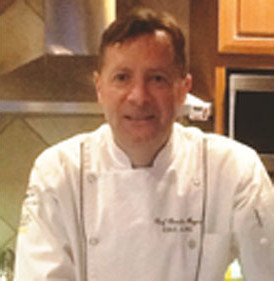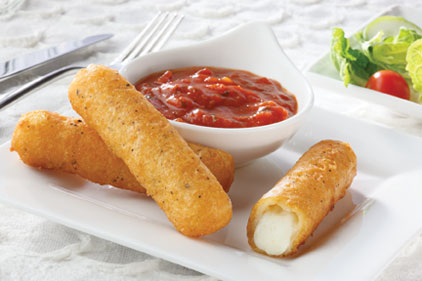Golden County Mozzarella Sticks - Photo Courtesy Golden County Foods

Editor’s note: Prepared Foods talks with Charles Hayes, CRC, CEC, founder of Food and Beverage Design Ltd., and the corporate chef for Golden County Foods—a Plover, Wis., appetizer company. Hayes also is 2014 president of the Research Chefs Association (RCA).
Prepared Foods: How do consumers view appetizers differently today than 10 years ago?
Charles Hayes: We have seen a big change in appetizers during the past 10 years. With the rise in celebrity chefs on television, consumers are stepping up their game! They are demanding bold, fresh flavors. Ethnic trends also have taken hold. Items such as hummus, duck confit, fried pig’s ears and even deviled eggs are showing up all over the country.The consumer is much more aware [of culinary trends] and adventurous.
PF: What’s the most interesting new appetizer trend? Why?
Hayes: The biggest trend last year involved “street food.” Ethnic foods from around the globe popped up everywhere. The food scene is alive, and we’ve seen everything from bánh mi (Vietnamese bread) to Caribbean Jerk skewers. Sliders also came on strong with a variety of creative builds. I see the influx of food trucks and the advent of limited-service dining as key drivers behind these trends. In short, independents are creating new tastes.
PF: How do you grow professionally? Where do you find new appetizer ideas?
Hayes: I dine out often, several times a week. I look for new locations in familiar cities, and when I arrive in a new city, I find locals and ask lots of questions. Media helps too—but honestly, you need to be immersed in the culinary scene wherever you are. I’m always finding fascinating food and creative chefs wherever I travel.
I also read a lot! I’m not talking about foodie publications but, rather, the food editors in local news publications. My ideas come from many places. They are a culmination of my dining experiences and the melding of flavor experiences.
PF: What advice do you have for other chefs about working with R&D and operations?
Hayes: Every research chef strives to transfer taste. I like to layer flavors and flavor sensations. For example, take an item like arancini, a fried risotto ball. Let’s make this one with morel mushrooms and cheese. When you first bite into it, you get a crunchy sensation from the coating.
Now, what if I used a sriracha-flavored coating? Yep. Now, you also will feel the heat—right around the same time you smell the aroma of the cheeses used to bind the risotto. Finally, the pungent morel mushroom taste takes over. That’s it!
| In the mood for more appetizing content? Click here to learn more about why small offerings continue to be big business. |
The role of a research chef is more critical today. We are the champions of the products our companies produce. Understanding how to formulate items for large scale-up is an art all its own. It takes a scientific mind—as well as the artful soul of a chef—to make it all come together. The best advice I can offer any research chef is to work alongside your R&D counterparts. It takes scientists and engineers to make great food products. In short, it takes a team.
Power of Association
Formed in 1996 by a group of food professionals with a common interest in the challenges facing the profession, the RCA has rapidly grown to approximately 2,000 members. RCA has become the premier source of culinary and technical information for the food industry, with a professionally diverse membership that includes chefs, food scientists and other industry professionals. RCA members champion “culinology,” the blending of culinary arts and the science of food. Visit www.culinology.org for more details
